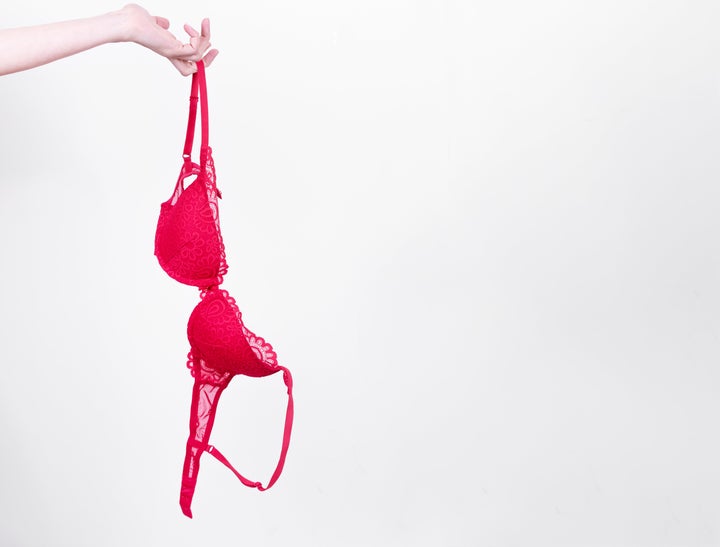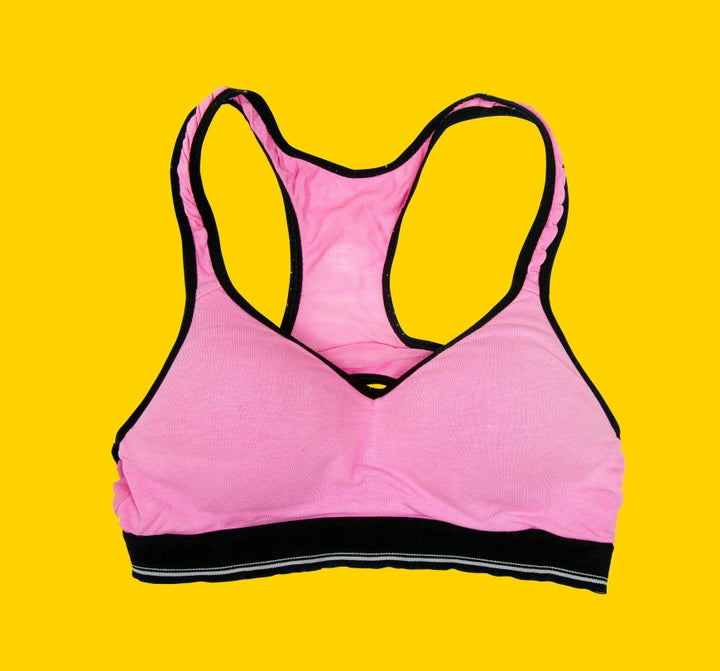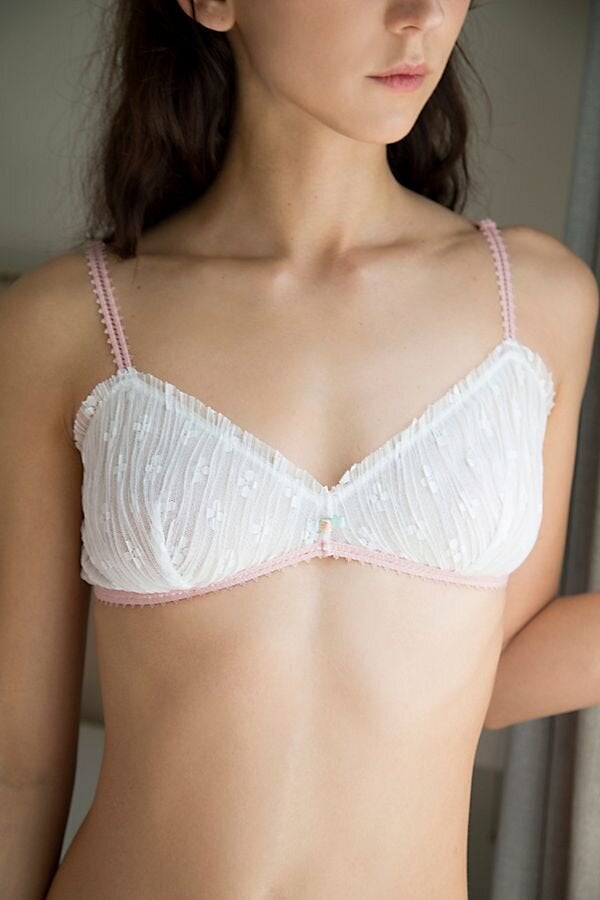Along with handshakes and pants, bras have begun to seem like quaint relics of a pre-coronavirus world. Even before we began sheltering in place, some women were leading a charge to stop wearing bras in the workplace. These days, the joy of going braless is one of the few pleasures possible in a workday that, for many people, is conducted exclusively on above-the-clavicle Zoom calls.
But now that the girls have been on the loose for a few weeks, some of us are wondering if the braless life is for the best.
The biomechanics of wearing a bra
We start our “Braless in Quarantine” tour with Joanna Wakefield-Scurr, a professor of biomechanics in the Department of Sport and Exercise Science at the University of Portsmouth in the U.K. As the head of a group dedicated to breast health and bra science, she offered background on breast biomechanics, bra research studies and suggestions for when you really do need to wear one.

“A lot of people don’t realize that the breast doesn’t have any muscles in it,” she told HuffPost. “It’s a lump of glandular tissue and fat, but that proportion varies wildly from woman to woman.”
One person could have 80% tissue and 20% fat, and someone else could have the reverse ― and the more glandular tissue in a breast, the denser and heavier it will be, Wakefield-Scurr said. When you consider that this tissue and fat have no supporting muscle, you can understand why bras were invented in the first place.
Heavy breasts tend to move more and can put more strain on the parts of the body that support them, such as the chest, back, neck and shoulder muscles, she added.
Breasts are supported by the skin, but they also may or may not – and here’s where things can get contentious – be supported by something called Cooper’s ligaments, which were first described by surgeon and anatomist Sir Astley Paston Cooper in 1840. Their value and purpose has been marked by skepticism over the years ― some arguments claim that Cooper’s ligaments play a valuable role in keeping breasts aloft, as they require support at all times, while others believe the ligaments don’t exist at all. Still, Cooper’s name lives on, and sagging breasts are sometimes referred to as “Cooper’s Droopers.”
“Depending on the woman and the size of her breasts, even movement as low-key as walking around a living space or going up and down stairs can increase the risk of straining the skin beyond its natural limit.”
- Joanna Wakefield-Scurr, professor of biomechanics at the University of Portsmouth
In actuality, Cooper’s “ligaments” aren’t really ligaments at all, Wakefield-Scurr said, since those are defined as fibrous connective tissue that connects bones to other bones.
“In every breast, there’s an envelope of fascia, which is a connective tissue surrounding the breast tissue,” she said. “Then, there are these bits that dangle off the fascia and infiltrate the breast tissue. Those dangly bits are Cooper’s ligaments.”
What role do these not-really-ligaments play, if any, in supporting the breasts?
“They may provide support, but that’s not their primary function,” Wakefield-Scurr said. “Because they’re a tough tissue, they go from deep to superficial within the breast. It seems that their primary purpose is to surround the milk ducts and protect them. I think their level of support, if any, varies hugely from woman to woman. We will probably never know, since they are part of deep tissue structure that’s hard to measure on a live person.”
The purpose of a bra is different for every person
So what’s the purpose of a bra, anyway?
“There isn’t a straight answer to that question, which is in itself quite surprising,” Wakefield-Scurr said. “We use bras for different things, from keeping our breasts off our chests when we’re lounging around to protecting us while we’re running marathons, but the function of a bra is not conclusive.”
The one time you must wear a bra is during exercise, said Wakefield-Scurr, whose lab has been researching the strain that exercise places on breasts. She offered this caution: “Exercising without appropriate breast support can cause microdamage and microtraumas to breast tissue and skin and, on the extreme end of the scale, could cause stretch marks, which are scar tissue created by excessive strain.”
“Depending on the woman and the size of her breasts, even movement as low-key as walking around a living space or going up and down stairs can increase the risk of straining the skin beyond its natural limit,” she added.
Even for those who don’t exercise, there’s an issue of comfort. For some people, shedding a bra is the ultimate freedom. But for others, including those who have breast pain, as Wakefield-Scurr herself does, a bra is not an option, but a necessity.
“A bra can have many benefits, including providing support and perhaps reducing the risk of strain,” she said. “I wear a bra all day, every day at home, so at least for myself, I’m convinced there’s a lot of benefit to be had from bra use.”
Non-bra-related factors that actually do contribute to sagging
“A bra won’t make your breasts perkier, and it won’t make them sag,” said Elisabeth Dale, founder of The Breast Life and author of “bOObs: A Guide to Your Girls” and “The Bra Zone: How to Find Your Ideal Size, Style, and Support.”
In addition to scoffing at the supportive role of Cooper’s ligaments (“There’s no definitive science on this. Let’s just say I think Dr. Cooper thought very highly of himself”), Dale said that those who worry that bralessness causes sagging should consider other factors, including weight gain or loss, multiple pregnancies, genetics and age. She also pointed to smoking as a major culprit in the development of Cooper’s Droopers.
“Smoking breaks down skin tissue, and that contributes to sagging,” she told HuffPost, adding, “You aren’t going to harm yourself going braless, unless you’re exercising and they’re swinging around and getting in the way.”
Still, she understands that for people with large breasts, walking around the house without a bra may not feel comfortable.
“Maybe a bralette that keeps the breasts off the chest is what someone needs,” Dale said. “But women really do need to focus on fit in the first place, because a bad bra can make your shoulders hurt and cause pain.”
The study that can never be done
Lisa Sowder is a Seattle-based plastic surgeon who has been practicing since 1991. Her practice is primarily devoted to breast implant removal, breast reduction, fat grafts to the breast, and breast lifts.
“If you haven’t been wearing a bra while you’ve been sitting and working on the computer, it won’t cause lasting damage,” she told HuffPost.

Some sagging is going to be inevitable no matter what you wear, Sowder said, because of science.
“Gravitational force is the physical law where two bodies of masses attract each other,” she said. “The earth is attracting your breast and the breast is attracting the earth. The gravitational force is correlated to the mass. There’s more gravity on a 10-pound sack of flour than a five-pound one, which is why larger breasts will tend to sag more than smaller breasts. Gravity is naturally going to be pulling at the breast.”
Here, she revealed her secret scientific desire: “I’d love to see a picture of a female astronaut’s breasts on the International Space Station, without gravity. I’ll bet they would look perfect.”
As to whether or not bras have any value in preventing breast sagging, she said that an accurate study can never be done.
“You’d need to develop a one-sided bra, which would be difficult to make and horrible to wear. Then good luck convincing 10,000 women to wear it for 10 years so you can measure which breast sagged more — the one in the bra or the braless one.”
She urged people to buy the kind of bras their breasts need, and to wear bras when it suits them.
“Most bras are purely decorative, and if you’re an A or B cup, that’s fine, go for it,” Sowder said. “But if you have to have more support, you need to get something that’s well-made. And if you’re big, saggy and uncomfortable, you really should consider a breast lift or reduction.”
Even a bra designer said wearing bras is a personal choice
Ra’el Cohen is chief creative officer at bra manufacturer ThirdLove. A lingerie industry expert, Cohen has done thousands of fittings on women over the course of two decades. Is a bra necessary? It depends, she said.
“If you’re skipping bra-wearing for a month, especially if you have a larger chest, you could be hunching over more, and that poor posture could lead to some back pain,” she told HuffPost. “And then there are issues like sweating, chafing and irritation that can happen when your breasts are right on your chest. But it’s really all about personal choice.”
Cohen’s company has been acknowledging the no-bra freedom some have been enjoying on its Instagram page.
On Instagram, ThirdLove has made a point to acknowledge the bra-free freedom many women are enjoying these days. Like other experts, Cohen urged people not to settle for a bra that’s uncomfortable.
“We’re doing our job if you aren’t thinking about your bra at all,” she said.
After the no-bra freedom of the first few weeks of quarantine, Cohen said she’s noticed a shift toward dressing up for the workday. “I’ve heard from people that they’re getting dressed up to be on their Zoom calls,” she said. “Even if you’re just dressing from the waist up, a bra can help your clothes look better and make you feel supported.”
A HuffPost Guide To Coronavirus
- Stay up to date with our live blog as we cover the COVID-19 pandemic
- What happens if we end social distancing too soon?
- What you need to know about face masks right now
- How long are asymptomatic carriers contagious?
- Lost your job due to coronavirus? Here’s what you need to know.
- Everything you need to know about coronavirus and grief
- Parenting during the coronavirus crisis?
- The HuffPost guide to working from home
- What coronavirus questions are on your mind right now? We want to help you find answers.
- Everyone deserves accurate information about COVID-19. Support journalism without a paywall — and keep it free for everyone — by becoming a HuffPost member today.
